Nombre:
Estatua de Basava en Basavakalyan
Otro:
Localización:
View Larger Map
Récord: 33 m
Tipo: Estatuas
Categoría: Basava
Foto:
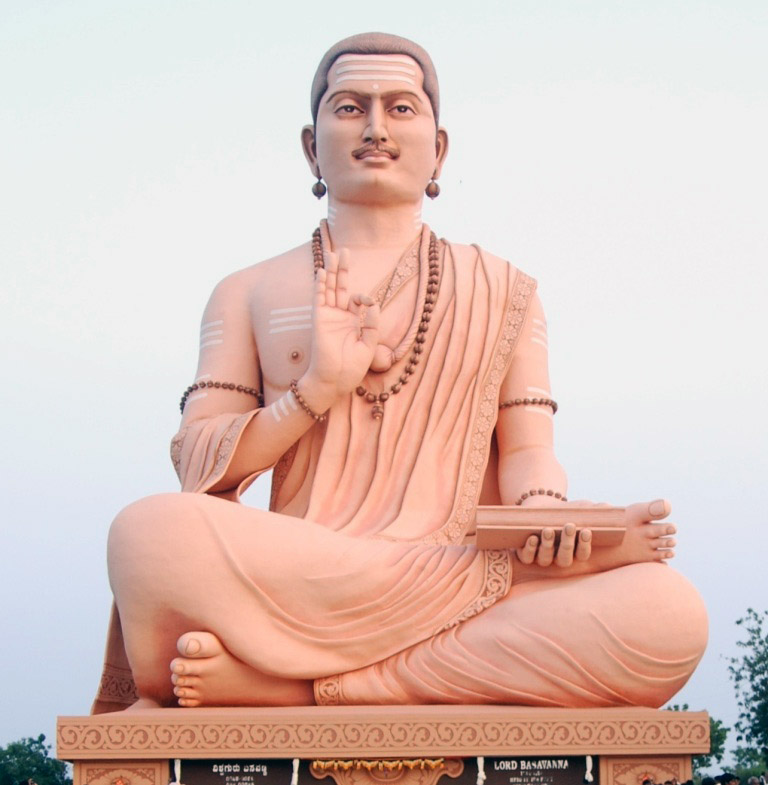
Voto:
Continente: Asia
País: India
Localización: Basavakalyan, Karnataka
Año: 2012
Estado: Terminado
Descripción:Guru Basava
Viswaguru Basavanna, the Dharma Incarnate and the blessed child of Almighty bestowed the world with a new revolutionary religion. He was born in the summer of 1134 A.D. the day and time in the traditional (almanac) calender being the Rohini period of the third Akshaya day of Vyshakha month, Anandanama Samvatsara (30-4-1134), to parents Madarasa and Madalambike belonging to a Shaiva Brahmin family of Ingaleswara Bagewadi in Karnataka State. Since the boy did not agree with the blind beliefs and irrational traditions, he left the house, the parents and relatives in search of truth and knowledge and went to Koodala Sangama in Bagalkot District of Karnataka State and joined Gurukula-educational centre there as a student. He was a youth of 21 years, by the time he finished his studies on scriptures. He was deeply pained to see ignorance, meaningless traditions, casteism and untouchability deep-rooted in the society and started thinking seriously to find out remedy for the same.
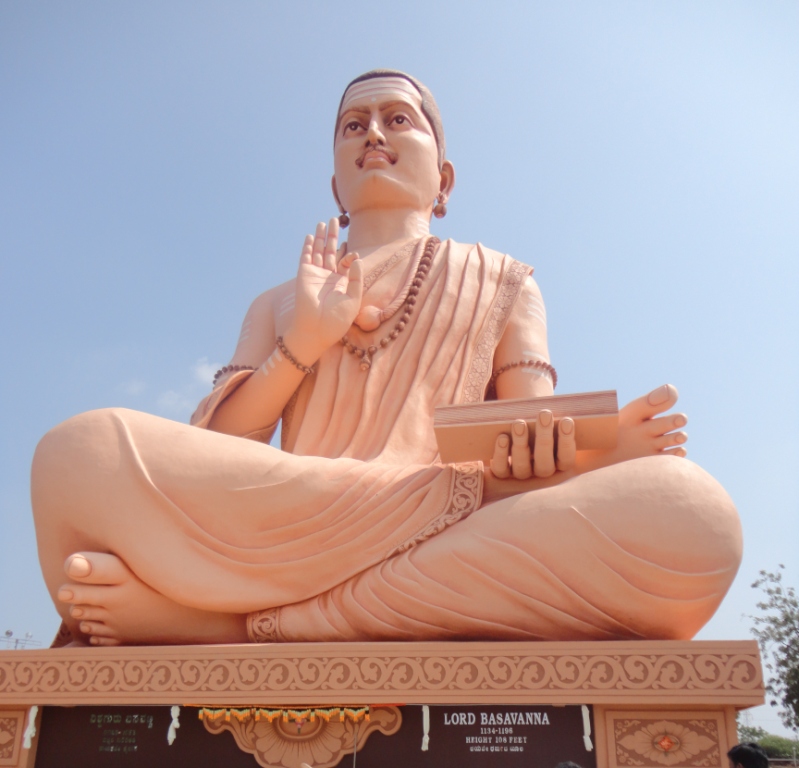
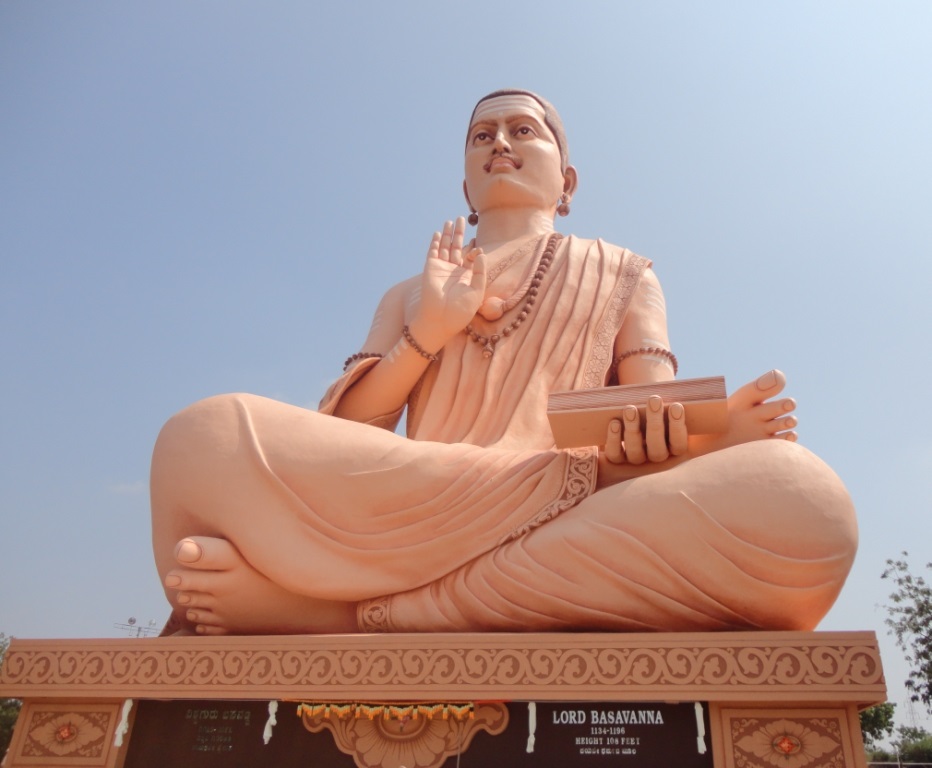
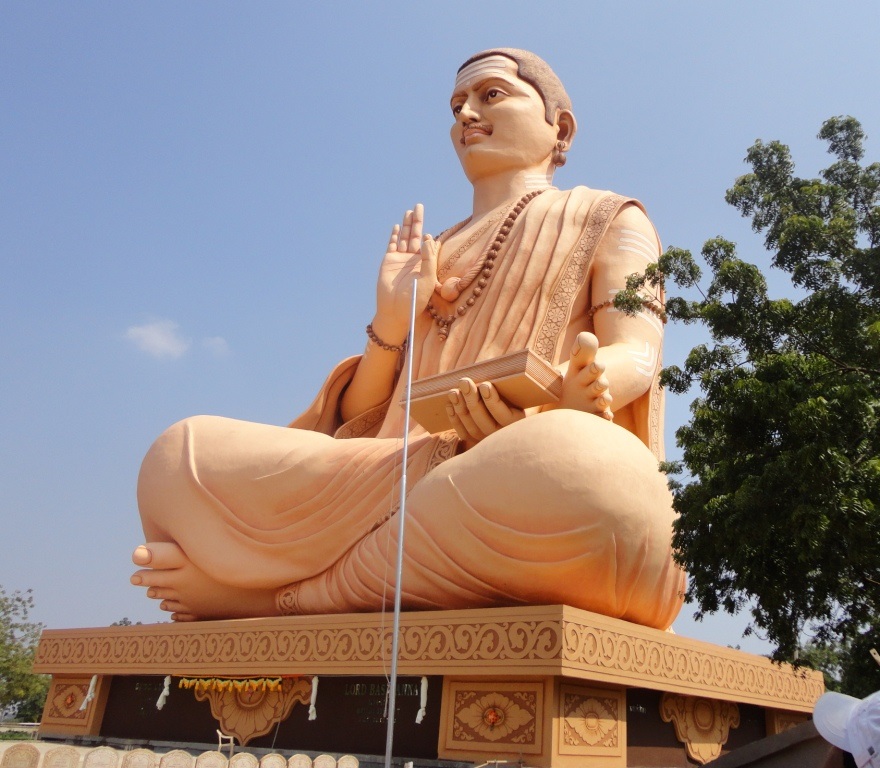
On 14-1-1155 he had divine vision and was blessed when he realised that it was not correct to give human/animal form to God who is formless and that the universe, the creation of God is hyperbolic in form and as such it is correct to worship God in the form of the universe i.e. hyperbolic form. Thus he gave the concept of Ishta-Linga. With the intention of making this concept as an instrument to overcome discrimination between caste, class, creed, sex etc., and transform them into Sharanas, Basavanna declared it as an emblem of the religion-Lingayatism.
After revelation, Basavanna entered into his field of work at Basava Kalyana in Bidar District with fullfledged plan in his mind for the establishment of an ideal welfare society. He married Sharane Neelaganga, the daughter of his maternal uncle, Baladevarasa and took the job of accountant in the palace of king Bijjala. Thereafter he rose to the position of Finance Minister and finally to the post of Prime Minister. He established the unique and glorious Anubhava Mantapa , an Academy of Socio-Spiritual and Religious experience and propagated the revolutionary religion, the religion accessible to all irrespective of their original caste or creed. He was responsible for the flow of Dharma Ganga to every door and to the minds of all. Everybody who got initiated to his religion was treated equal. As an ideal example he encouraged a marriage to be solemnised between two families who embraced the new religion. Originally, one family i.e. that of Sharana Madhuvarasa belonged to Brahmin and the other family. i.e. that of Sharana Haralayya belonged to cobbler. This made the traditionalists very much upset and they instigated the king Bijjala to condemn and exile Dharmaguru Basavanna. After Dharmapita Basavanna left Kalyana obeying the punishment-order given by the king, all the three, Haralayya, Madhuvarasa and Sheelavanta-the bridegroom were sentenced to death in a very cruel way. They had a tragic end. Their eyes were plucked; legs tied together were dragged along in the open field by an elephant till they succumbed to death. Thereafter the traditionalists hatched another plan to destroy the Vachana literature, the holy scriptures. But heroic mother, Akkanagalambike, the enlightened soul Channa Basavanna and vindictive natured Madivala Machideva fought bravely to save the canonical scriptures to the posterity. Today it is the esteemed treasure not only for Karnataka but for the whole world as well.
http://lingayatreligion.com/GuruBasava/GuruBasava.htm
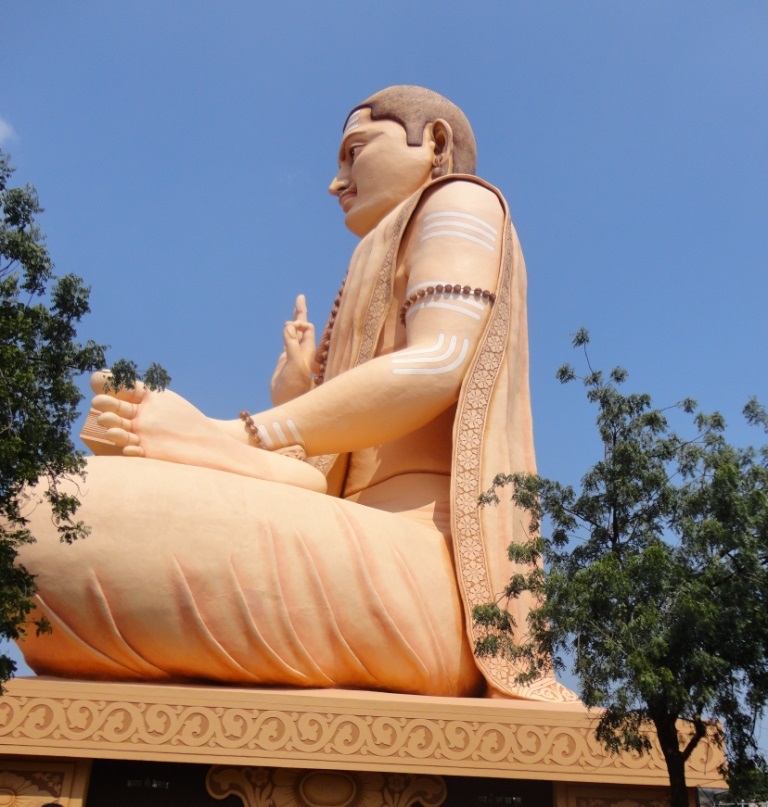
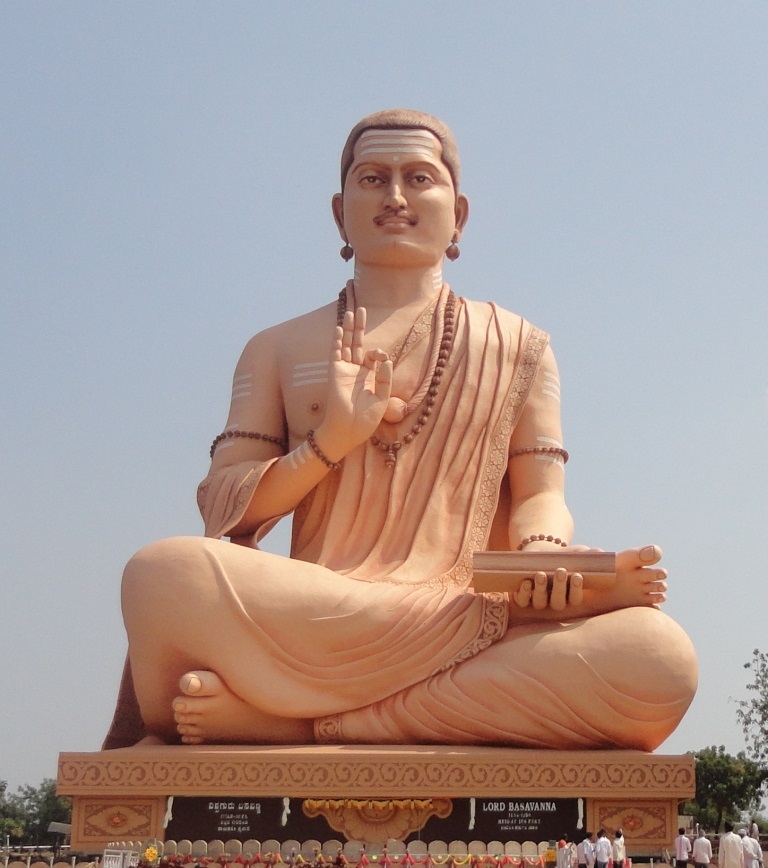
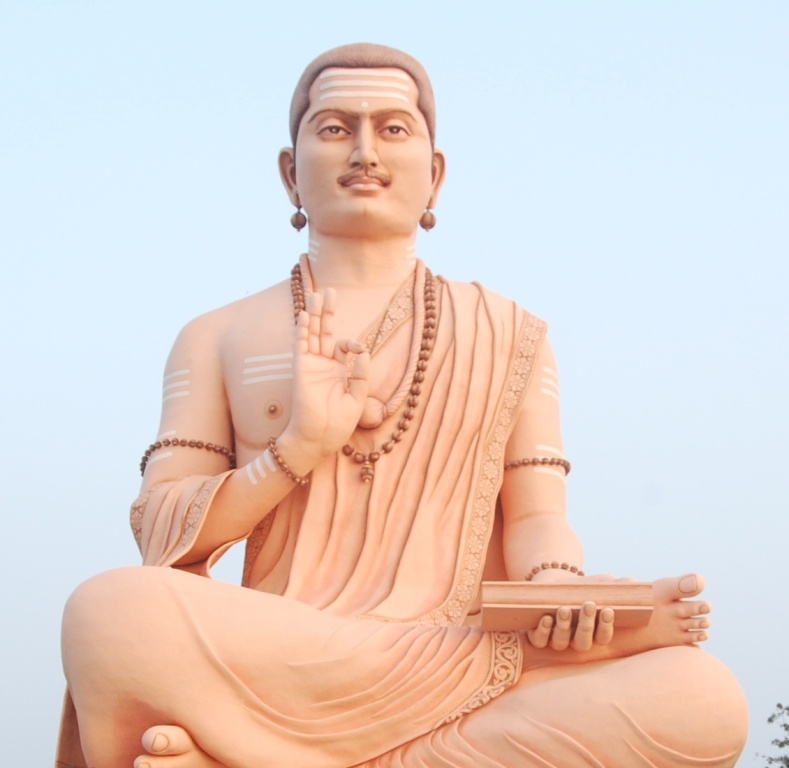
Basava (Kannada: ಬಸವ) (also known as Bhakti Bhandari Basavanna (Kannada: ಭಕ್ತಿ ಭಂಡಾರಿ ಬಸವಣ್ಣ ) or Basaveshwara (Kannada: ಬಸವೇಶ್ವರ), (1134–1196)) was an Indian philosopher, statesman and a social reformer from what is now Karnataka, India. Basava fought against the practice of the caste system, which discriminated against people based on their birth, and other rituals in Hinduism. He spread social awareness through his poetry, popularly known as Vachanaas. Basavanna used Ishtalinga, an image of the Śiva Liṅga, to eradicate untouchability, to establish equality among all human beings and as a means to attain spiritual enlightenment. These were rational and progressive social thoughts in the twelfth century. Basaveshwara is undoubtedly one of the pioneer's of Indian Democracy. He created a model Parliament called the "Anubhava Mantapa," which not only gave equal proportion to men and women, but also had representatives from different socioeconomic backgrounds. The carvings of the model Parliament can be found across many temples in south India. He was a man ahead of his time, who believed that conflict should be resolved through debate and not violence. He advocated mercy towards both humans and animals.
Classical Hindu theologists interpret the Vachanaas as the essence of Vedic knowledge while attempting to explain the social revolution Basava was ushering in. But this theory fails to explain why other well-known religious leaders like Shankaracharya and Madhwacharya, who were very well acquainted with Vedic knowledge, did not address the issues, that Basava did in the later part of the 12th century. Basava, unlike Gautama Buddha, did not preach people the intricate aspects of spirituality; rather, he taught people how to live happily in a rational social order which later came to be known as the Sharana movement.
Basavanna (Basaveshwara) is called "Vishwaguru" because he is believed by his followers to have been the first ever to know the practicality of transcending to Godliness and demonstrating the technique of becoming God through around 800 Sharanas. Basavanna spread the concept of the path of becoming God through four levels of divinity that exists in one's own body- Unmanifest Chaitanya (Guru), Manifest Chaitanya-Shakti (Linga), Consciousness of the manifest chaitanya-shakti in Prana (Jangama), and the Individual consciousness (Jeevatma/Mind). Basavanna taught Sharanas, the technique of transcending the mind with one's own prana through a process of Ishtalinga, Pranalinga and Bhavalinga saadhana and that anybody in the world, irrespective of caste, creed, merit, nationality, etc., can transcend and become God by being in union with prana.
http://en.wikipedia.org/wiki/Basava
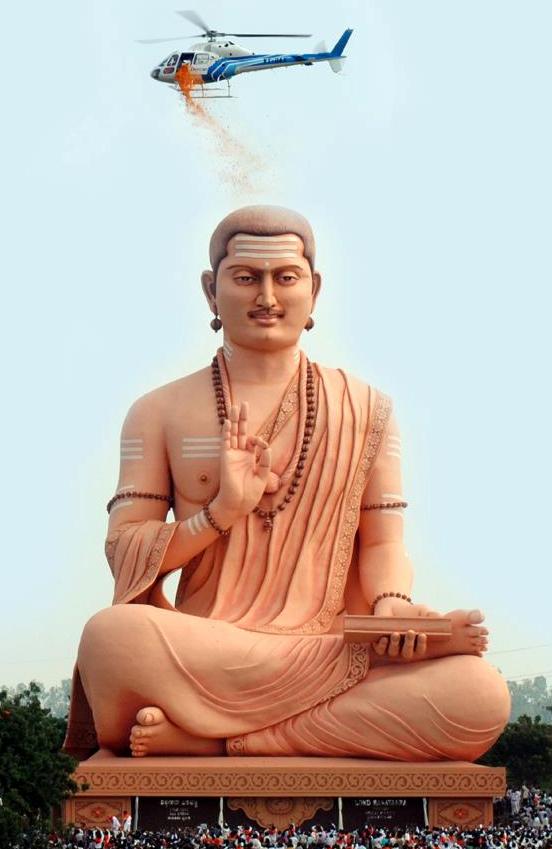
Vídeo:
Web recomendada: http://www.statueofbasava.com/b_statue.html
Contador: 9515
Inserción: 2013-10-15 12:58:16
Lugares a visitar en un radio de 100 km (en línea recta)
Mapa de los lugares a 100 km (en línea recta)
Mostrando Registros desde el 1 hasta el 0 de un total de 0
Visitas |
Más visitados Basílica de San Marcos 154631 Catedral de Notre Dame (París) 143964 Torre de Pisa 131357 Monte Saint-Michel 100486 Presa de las Tres Gargantas 81265 |
Incorporaciones |
Comentarios hazola Cúpula de la Roca gracias me... gera Buenos Aires las mejores fotos de la mejor ciudad del... Daniel M. - BRASIL San Francisco ... PEQUE Presa Chicoasén SERA QUE ALGUIEN ME PUEDE DAR MAS INFORMACIÓN DE ESTE PROYECTO ESTUDIO EN LA UNACH Y ES PARA UN... Mery Huaca Pucllana Muy interesante, muy buena la información y... |
 Tweet
Tweet


